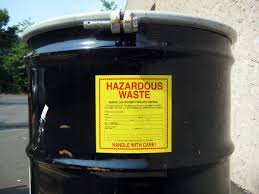In today’s industrial landscape, regulatory compliance is an essential component of business operations, especially when it comes to managing hazardous waste. The Resource Conservation and Recovery Act (RCRA) is a federal statute that governs the generation, transportation, treatment, storage, and disposal of hazardous waste in the United States. Businesses must understand and follow RCRA regulations in order to protect the environment, public health, and comply with the law. In this blog, we’ll look at the complexities of RCRA hazardous waste guidelines, giving businesses a thorough understanding of their regulatory responsibilities and best practices for compliance.
What is the RCRA?
The Resource Conservation and Recovery Act (RCRA) is a comprehensive federal statute passed in 1976 that governs the management of hazardous waste from cradle to grave. RCRA seeks to protect human health and the environment by establishing guidelines for the proper handling, treatment, storage, and disposal of hazardous wastes. The law authorizes the Environmental Protection Agency (EPA) to create and enforce regulations governing hazardous waste management practices.
Understanding Hazardous Waste
Hazardous waste is defined by RCRA as any waste material that poses a significant threat to human health or the environment due to its chemical, physical, or biological characteristics. Hazardous waste can come from a variety of sources, including manufacturing processes, industrial operations, construction projects, and household products. Solvents, paints, pesticides, heavy metals, and toxic chemicals all fall under the category of hazardous waste.
RCRA Hazardous Waste Guidelines
RCRA establishes a comprehensive regulatory framework for hazardous waste management, including waste generation, transportation, treatment, storage, and disposal. RCRA hazardous waste guidelines contain the following key components:
1. Generator Requirements: RCRA categorizes hazardous waste generators into three types: large quantity generators (LQGs), small quantity generators (SQGs), and conditionally exempt small quantity generators (CESQGs) based on the amount of hazardous waste generated monthly. Each generator category is subject to unique regulatory requirements regarding waste collection, labeling, storage, recordkeeping, and reporting.
2. Storage and Treatment Standards: RCRA establishes guidelines for the safe storage and treatment of hazardous waste in order to reduce the risk of releases, spills, or leaks that could endanger human health or the environment. These standards cover containment, secondary containment, compatibility, structural integrity, and operational requirements for hazardous waste storage and treatment facilities.
3. Transportation Requirements: RCRA has strict regulations in place to ensure that hazardous waste is handled safely and securely while in transit. These regulations cover packaging, labeling, marking, placarding, manifesting, and reporting requirements for hazardous waste shipments. Transporters must follow DOT regulations as well as specific RCRA requirements.
4. Land Disposal Restrictions (LDRs): The RCRA’s land disposal restrictions (LDRs) program forbids the disposal of certain hazardous wastes in landfills, surface impoundments, or waste piles unless they meet treatment standards intended to reduce environmental risks. LDRs apply to specific types of hazardous waste, including heavy metals, organic compounds, and cyanide compounds.
5. Permitting and Corrective Action: RCRA requires hazardous waste treatment, storage, and disposal facilities (TSDFs) to obtain EPA or authorized state agency permits in order to operate legally. Permitting requirements include proving compliance with technical standards, financial assurance provisions, and closure and post-closure care requirements. TSDFs must also create and implement corrective action plans to address releases or environmental contamination caused by hazardous waste management activities.
Best Practices for RCRA Compliance
Achieving compliance with RCRA hazardous waste guidelines necessitates proactive management, meticulous recordkeeping, and a dedication to environmental responsibility. Businesses can achieve compliance by implementing the following best practices, ensuring a cradle to grave approach to waste management:
1. Know Your Waste: Perform a thorough waste characterization to identify and categorize hazardous waste streams produced by your operations. Understand each waste stream’s chemical composition, physical properties, and potential hazards to determine the best methods of handling, storage, and disposal.
2. Implement Proper Storage Practices: To avoid releases or spills, store hazardous waste in designated areas equipped with appropriate containment systems, secondary containment measures, and leak detection systems. Containers should be clearly labeled with the contents, hazards, and accumulation start date to facilitate identification and tracking.
3. Train Personnel: Employees involved in hazardous waste management activities should receive comprehensive training to ensure that they understand their roles, responsibilities, and regulatory requirements. Waste management procedures, emergency response protocols, spill prevention measures, and proper PPE use should all be covered during training.
4. Maintain Accurate Records: Keep detailed records of hazardous waste generation, storage, transportation, treatment, and disposal activities to demonstrate RCRA compliance. Maintain manifests, waste profiles, inspection logs, training records, and any other documentation required by law.
5. Stay Informed: Learn about changes to RCRA regulations, guidance documents, and enforcement initiatives issued by the EPA or authorized state agencies. Participate in industry associations, attend training workshops, and consult with environmental professionals to stay current on best practices and emerging trends in hazardous waste management.
6. Conduct Regular Audits: Perform regular audits and inspections of your hazardous waste management practices to identify potential compliance gaps, operational deficiencies, or areas for improvement. To avoid future violations, address any issues as soon as possible and put corrective measures in place.
Conclusion
Regulatory compliance with RCRA hazardous waste guidelines is critical for businesses to protect human health, the environment, and avoid legal liabilities. Businesses can achieve compliance while minimizing risks and increasing efficiency in hazardous waste disposal by understanding RCRA requirements, implementing best waste management practices, and maintaining an environmentally responsible culture. Waste not, want not—by taking proactive steps to comply with RCRA regulations, businesses can ensure responsible hazardous waste management and contribute to a safer, cleaner, and more sustainable future for all. Learn more about Waste Disposal Group for expert guidance and comprehensive solutions in managing hazardous waste from cradle to grave, ensuring full compliance and environmental responsibility throughout the disposal process.

